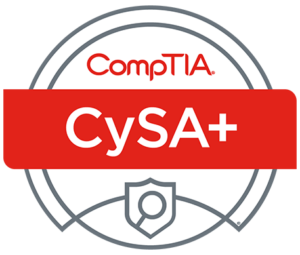5 Day
This course provides the basic knowledge needed to analyze, monitor, and protect cybersecurity resources in a vendor-neutral format. It includes threat intelligence, vulnerability management, network reconnaissance and monitoring, secure policies and procedures, host and network security, identity management systems, and incident response. This course maps to the CompTIA Cybersecurity+ certification exam CSO-002. Objective coverage is marked throughout the course.
You will benefit most from this course if you intend to take a CompTIA Cybersecurity Analyst+ CS0-002 exam.
This course assumes that you have some applied knowledge of computers, networks, and cybersecurity principles. Knowledge equivalent to the CompTIA Security+ certification is helpful but not necessary.
TARGET AUDIENCE
This course is designed primarily for cybersecurity practitioners who perform job functions related to protecting information systems by ensuring their availability, integrity, authentication, confidentiality, and non-repudiation. This course focuses on the knowledge, ability, and skills necessary to provide for the defense of those information systems in a cybersecurity context, including protection, detection, analysis, investigation, and response processes. In addition, the course ensures that all members of an IT team—everyone from help desk staff to the Chief Information Officer—understand their role in these security processes.
PREREQUISITES
or equivalent knowledge. Minimum of 3-4 years of hands-on information security or related experience. While there is no required prerequisite, CySA+ is intended to follow CompTIA Security+ or equivalent experience and has a technical, hands-on focus.
Course Outline
Chapter 1: Understanding threats
- Module A: Threats and vulnerabilities
- Module B: Threat intelligence
- Module C: Automation technologies
Chapter 2: Policy design
- Module A: Security policies
- Module B: Controls and procedures
Chapter 3: Vulnerability management
- Module A: Risk management programs
- Module B: Vulnerability assessment
- Module C: Vulnerability management programs
Chapter 4: Recognizing vulnerabilities
- Module A: Attack strategies
- Module B: System vulnerabilities
- Module C: Application exploits
Chapter 5: Network threats
- Module A: Network vulnerabilities
- Module B: Cloud vulnerabilities
Chapter 6: Reconnaissance
- Module A: Reconnaissance techniques
- Module B: Active reconnaissance
- Module C: Analyzing scan results
Chapter 7: Network security systems
- Module A: Network security systems
- Module B: Logging and monitoring
Chapter 8: Network defense techniques
- Module A: Data analysis
- Module B: Threat hunting
Chapter 9: Secure infrastructure management
- Module A: Data protection
- Module B: Hardening networks
- Module C: Cryptographic security
- Module D: Identity systems
Chapter 10: Secure system design
- Module A: Hardware assurance
- Module B: Hardening hosts and devices
- Module C: Software assurance
Chapter 11: Incident Response
- Module A: Incident response planning
- Module B: Incident response procedures
- Module C: Forensic toolkits


